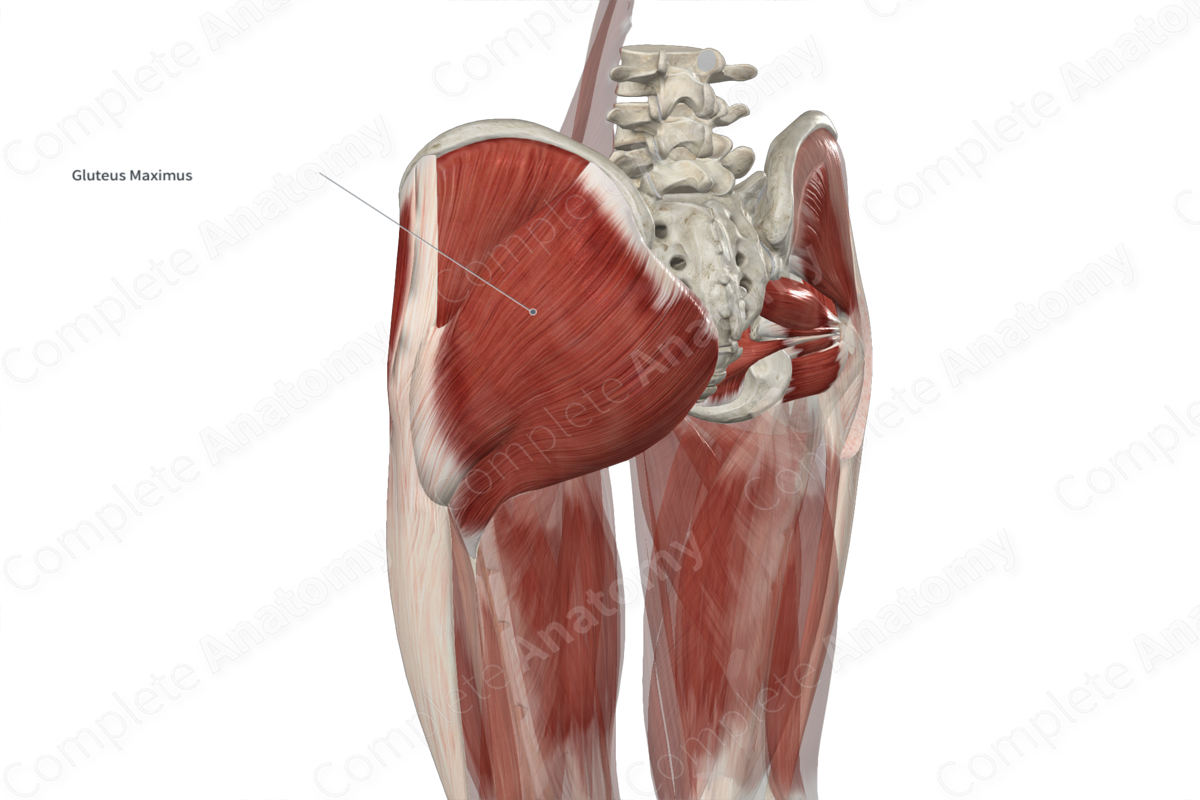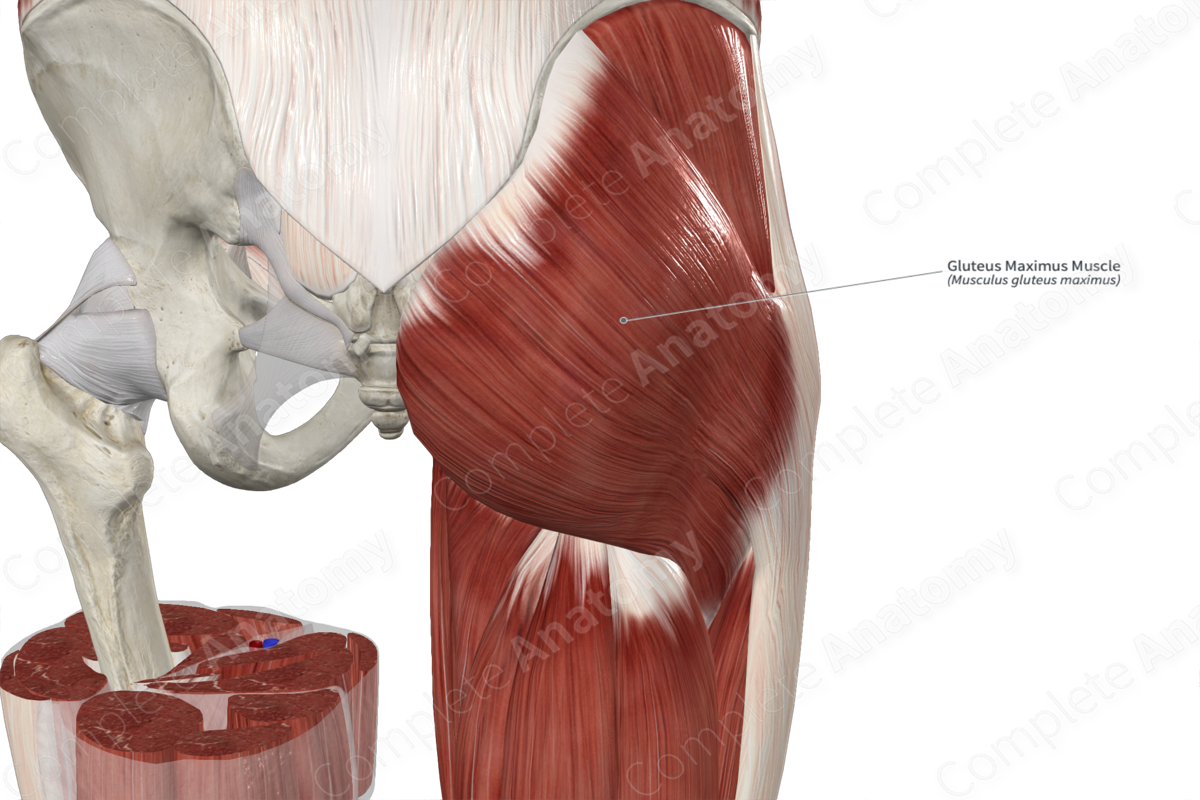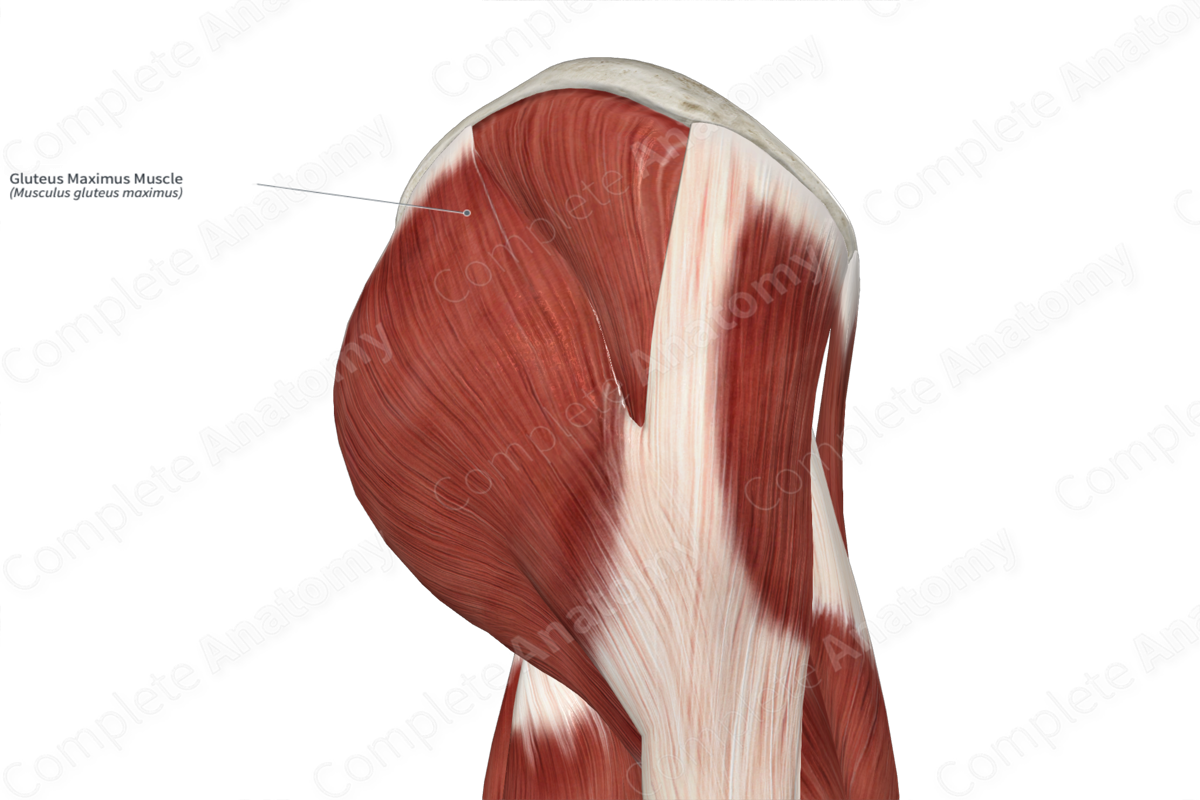
Quick Facts
Origin: Area of ilium located posterior to its posterior gluteal line, posterior aspects of sacrum and coccyx, and sacrotuberous ligament.
Insertion: Tubercle of iliotibial tract on the tibia, via iliotibial tract and gluteal tuberosity of femur.
Action: Extends, laterally rotates, and abducts thigh at hip joint.
Innervation: Inferior gluteal nerve (L5-S2).
Arterial Supply: Superior and inferior gluteal arteries.
Related parts of the anatomy
Origin
The gluteus maximus muscle originates from the:
area of the gluteal surface of ilium that is located posterior to its posterior gluteal line;
posterior aspect of sacrum;
posterior aspect of coccyx;
sacrotuberous ligament.
Insertion
The fibers of the gluteus maximus muscle travel inferolaterally, where:
its superior part and superficial half of its inferior part insert onto the iliotibial tract, which inserts onto the tubercle of iliotibial tract on the tibia;
the deep half of its inferior part inserts onto the gluteal tuberosity of the femur.
Key Features & Anatomical Relations
The gluteus maximus muscle is one of the superficial gluteal muscles. It is a large, thick, quadrilateral type of skeletal muscle.
It is located:
superficial to the gluteus medius muscle, the deep gluteal muscles, the trochanteric and sciatic bursae of gluteus maximus muscle, and the sciatic nerve;
deep to the gluteal fascia and the subcutaneous tissue of the gluteal region.
Actions & Testing
The gluteus maximus muscle is involved in multiple actions:
extends the thigh at the hip joint;
laterally rotates the thigh at the hip joint;
abducts the thigh at the hip joint;
helps stabilize the extended knee joint.
The gluteus maximus muscle can be tested by extending the thigh at the hip joint against resistance while lying in the prone position, during which it can be seen and palpated (Standring, 2016).
List of Clinical Correlates
Intragluteal injections
Gluteus maximus musculocutaneous flaps
References
Standring, S. (2016) Gray's Anatomy: The Anatomical Basis of Clinical Practice. Gray's Anatomy Series 41st edn.: Elsevier Limited.
Learn more about this topic from other Elsevier products





